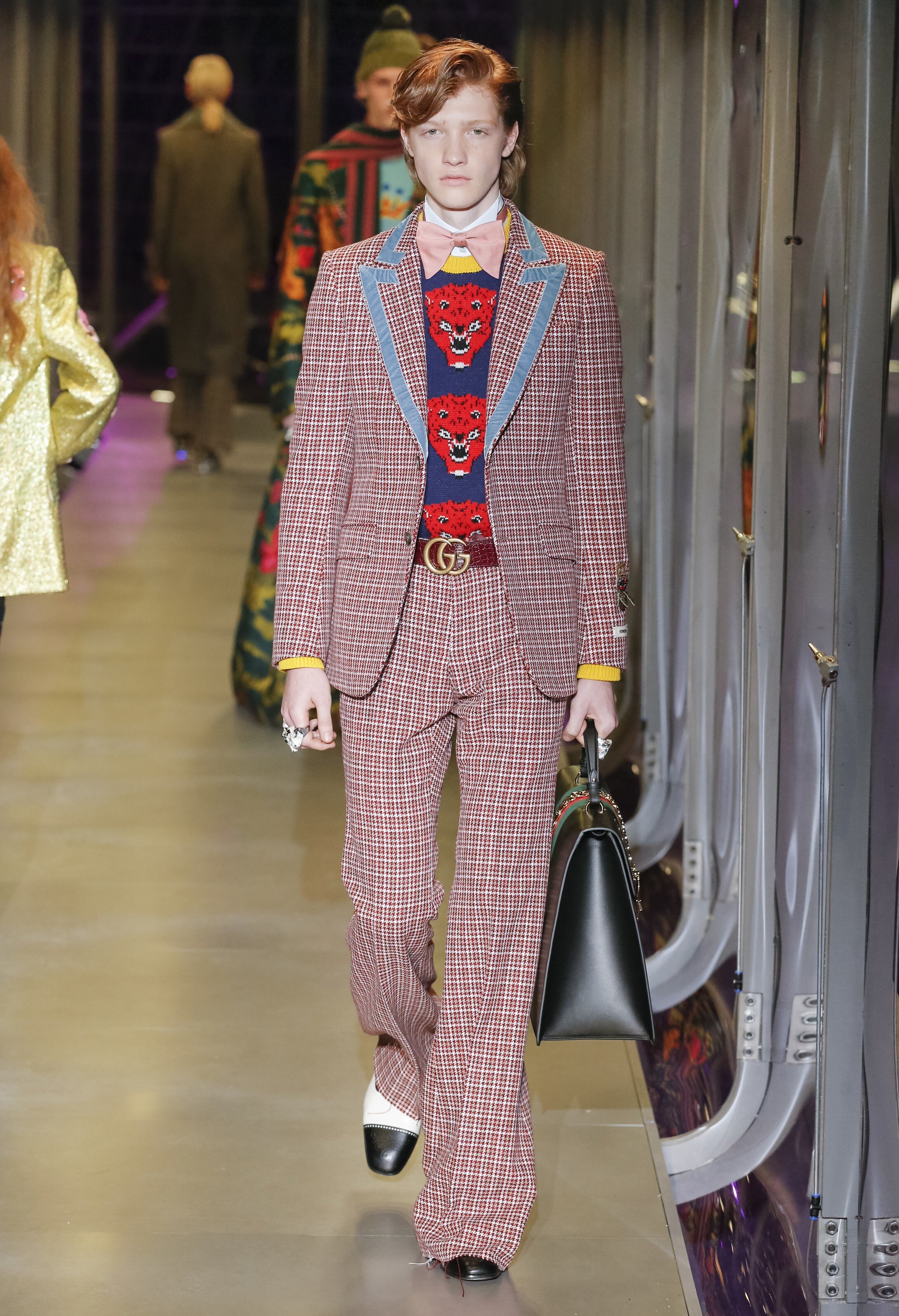Fall/Winter 2017: The Success of Three Fashion Powerhouses
By Michael Sachen, Men’s Writer
This Fall/Winter season was best defined as a further separation between the old school and the new school. The current defining brands are huge draws (and sellers) because they do such a fantastic job of selling this new-school-take-on-the-old-school as a lifestyle. As such, it wouldn’t be a stretch to define the dominant designers as Gosha Rubichinsky, Demna Gvasaglia of Vetements and Alessandro Michele of Gucci—all of whom have come up similar to the Antwerp 6 in the early 90’s, but with their own radical, iconic vision. Their success comes not only from brilliant creative minds, but from a few key characteristics that set them apart from the rest.
They Are Instantly Recognizable
At the mention of the three above labels, the mind instantly fills with images of their clothing and brand. Today, this works particularly well because brand and lifestyle recognition work into exactly what the consumer wants. This is a win-win, as the companies are finding this not only massively profitable, but in-line with what the creative directors are creating. Demna’s first few seasons with Vetements proved interesting, but as his success (and wallet) grew, his product has started to shift toward branding. This means less RTW, and more hoodies. Similarly, Gucci now makes their sweaters from wool instead of cashmere, and this shows a definitive difference in the ethos of the brand. The fashion conglomerate Kering owns both companies, who has seen massive growth because of these two labels. The compromise, then, of allowing the creative directors to operate in their space, means working in areas the consumers gravitate towards, but more freely. The result is an item of clothing that immediately has a name to it.
Their Timing is Perfect
It might be a little clichéd to say the menswear cycle goes 20 years before repeating, but this is (partially) ringing true today, as much of what we’re seeing is rehashed, spiced up grunge references sprinkled in with old-school Margiela. Interestingly, both Gosha and Vetements presented tailoring this season reminiscent to the silhouette of 90’s Armani power suits. Ultimately, though, what does this mean? Is there enough new context in reinterpretations of the old to make a difference? In regards to this, fashion is in a bubble, and while Gosha and Vetements put out referential tailoring, it’s a reflection of the past, not a commentary on the new. In this way it is hard to imagine mainstream high fashion going anywhere soon, in part because the designers of today are not dangerous enough to break the cycle. Almost 20 years ago Supreme ripped the Louis Vuitton logo and was promptly issued a cease and desist. 17 years later, and Kim Jones has initiated an official collaboration. Why doesn’t Supreme lose any cred over this? As a niche skateboarding brand that built their base by standing against the establishment, doesn’t this conflict with their message? No, the Supreme buyer today is not necessarily part of the culture, but buying into it.
They Can Successfully Market a Lifestyle
All three labels do a fantastic job of expertly curating and showcasing a lifestyle associated with their clothes. Gosha nails Russian youth culture, Vetements has punk culture and postmodernism, and Gucci focuses on British Punk ala Vivienne Westwood, mixed with Iceberg History and the bougieness inherent in their work. This ability to sell a lifestyle is dramatic in influencing and capitalizing on the consumption habits of the fashion buying crowd. The lack of subculture today drives millennial consumers to buy something immediately attached to a story, and what sells best is the most extreme. Unfortunately, the dark side of this intense storytelling is the concentration of big money pushing subculture based brands, with Comme des Garcons behind Gosha, and Kering backing Gucci and Vetements. While we may have the perception of supporting a subculture, ultimately our money goes toward multinational fashion conglomerates. Business is business.
What else?
On a less cynical note, this season was also marked by old houses rebounding. After 3 years, John Galliano finally came into his own at Margiela, and presented something beyond words with this seasons artisanal line featuring the tulle art of Benjamin Shine (shown below.) Haider Ackermans’ showing at Berlutti was also fantastic. Sebastien Meunier is making a name for himself at Ann Demuelemeester where he followed up last years show with one of the few obvious political statements made by recognized brands. While this is a dime a dozen at smaller houses craving attention, not often is it done in such good taste. Here, the definition of good is the recapturing of the soul behind the storied houses, which has been missing since the namesake designers respective departures. We were huge fans.
Whats to come?
Labels with new directors, like Calvin Klein, had not only hotly anticipated lines, but new direction to show. Raf’s showing at Calvin Klein was amazing, but more importantly, just in time. As we mentioned last week, it may not appeal to the consumer of today, but Raf has a knack for being way ahead of fashion to come. The nice break from the cynical postmodernism of Vetements and Balenciaga that has been endlessly covered was the sincerity behind Dries Van Noten’s men’s line, as he featured the labels of the fabric producers on the outside of the garment in celebration of the craftsman. It’s possible that he, and other designers like him, have another chance to reshape the next philosophical era of clothes. And while each collection has shown its own little spark of dare, hopefully the future collections of these talents incorporate a greater amount of deviation from the norm. And that, of course, remains to be seen.

